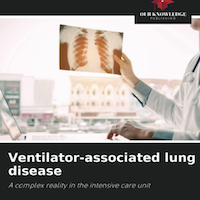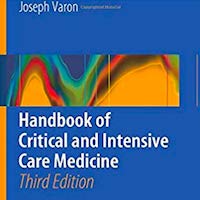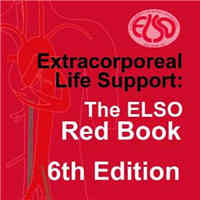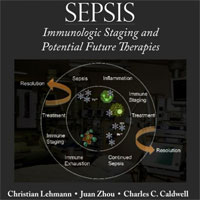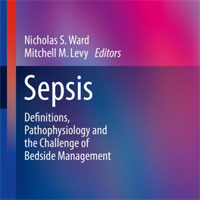Tag: antibiotics
Inadequate Empirical Antibiotic Therapy in VAP: Risk Factors and Outcomes
Ventilator-associated pneumonia (VAP) caused by MDR pathogens were highly likely to receive inadequate empirical antibiotic therapy. The mortality rate and intubation duration were significantly longer in inadequately treated... read more
Holy Water Not so Holy: Potential Source of Elizabethkingia Pneumonia and Bacteremia in an Immunocompromised Host
This case report highlights that E. anophelis may indeed cause significant infection and should not be considered a contaminant especially in immunosuppressed individuals. The organism originates from water sources and may... read more
Ventilator-associated Pneumonia Pathogenesis: Old and New Mechanisms
Ventilator-associated pneumonia (VAP), defined as a lung infection that occurs in patients after 48 hours on mechanical ventilation, is among the most frequently found nosocomial infections in intensive care units around... read more
Aminoglycosides Impact on Survival Rate and Renal Outcomes in Patients with Urosepsis
The addition of aminoglycosides to beta-lactam therapy in critically ill patients with urosepsis did not significantly improve 30-day survival. Furthermore, aminoglycosides were not associated with worse renal outcomes.... read more
Sepsis Management: PIRO and MODS
This book is unique in approaching multiple organ dysfunction syndrome (MODS) from the perspective of its pathophysiological mechanism, and addressing aspects that are overlooked in most of the available literature. Eminent... read more
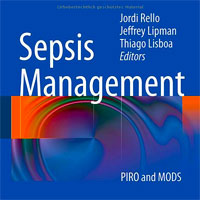
VAP Recurrences Definition: European Experts Consensus
This consensus by European experts proposes four different ventilator-associated pneumonia (VAP) recurrence entities which should facilitate the harmonization of recurrence criteria for clinical practice and future studies. Thirty-six... read more
Mortality in Patients with SA-AKI Using the MIMIC-III Database
In this study, we identified critical factors influencing mortality in patients with Sepsis-Induced Acute Kidney Injury (SA-AKI) using the MIMIC-III database. The primary findings of our research, including advanced age,... read more
VAP in Patients with Increased Intra-abdominal Pressure
Critically ill patients with increased intra-abdominal pressure (IAP) and multidrug-resistant (MDR) ventilator-associated pneumonia (VAP) are considered a challenging patient population in every ICU setting. Patients with... read more
Prophylactic IV Antibiotics Outcomes in Patients with Acute Severe Brain Injury on Mechanical Ventilation
Among critically ill patients with acute brain injury, prophylactic IV antibiotics were associated with less VAP but not with changes in length of stay, mortality, or neurologic outcomes. Patients with structural brain... read more
Standard vs. Double Dosing of Beta-lactam Antibiotics in Critically Ill Sepsis Patients
The BULLSEYE trial is a randomized controlled study designed to enhance the treatment of critically ill patients with septic shock. The concept of administering higher and double doses of beta-lactams in such patients... read more
PCR and Biomarker Algorithms to Guide Antibiotics in Lower Respiratory Tract Infections
Acute chest syndrome (ACS) in sickle cell disease (SCD) is life-threatening and characterised by a new infiltrate on imaging plus fever or respiratory symptoms.1 Causes of ACS include infections, venous or fat embolisms or... read more
Association Between Osteopontin and Apolipoprotein E gene Polymorphisms and Vancomycin-induced AKI
Individuals carrying specific genotypes of APOE (e2e3) were more prone to develop vancomycin-induced acute kidney injury (AKI), per se. This could apply to other nephrotoxic agents as well. We also observed a significant... read more
Septic Distributive Shock: Resuscitative Endovascular Balloon Occlusion of the Aorta
Massive distributive shock can lead to total collapse of the cardiopulmonary system with a subsequent need for CPR. Partial REBOA may be a viable resuscitation adjunct in such cases to restore hemodynamics and increase coronary... read more
Antibiotic Pharmacokinetic/Pharmacodynamic Considerations in the Critically Ill
This book provides unique insights into the issues that drive modified dosing regimens for antibiotics in the critically ill. Leading international authors provide their commentary alongside a summary of existing evidence... read more

Assessing the Risk of Poor Clinical Outcomes in Preterm Neonates with Late-onset Sepsis
A predictive calculator for assessing the risk of poor clinical outcomes in preterm neonates with late-onset sepsis (LOS) has been developed. By leveraging readily available clinical data at the time of blood culture collection,... read more
Antibiotic Prophylaxis Effectiveness in Polytrauma Patients
The results indicate that antibiotic prophylaxis has no significant effect on mortality and clinical status compared with placebo or standard care in adult polytrauma patients but may reduce the risk of VAP. However,... read more
Which Antimicrobial Treatment for Patients with Bloodstream Infection During ECMO Support?
Enterococcus sp. was incriminated in about a third of BSI among patients with ECMO support. High appropriateness would only be obtained with piperacilline/tazobactam or carbapenems in association with vancomycin while 3rd... read more
Ventilator Associated Pneumonia in ICU: Identification, Evaluation and Prevention
This study highlights the significant prevalence of Pseudomonas aeruginosa (PA) as a major bacterial pathogen causing ventilator-associated pneumonia (VAP) in ICU patients, with a high detection rate of 71.7% in tested patients,... read more
Zosyn vs. Efepime: Which One Is Safer?
While both piperacillin-tazobactam and cefepime are commonly used to treat infections caused by Pseudomonas aeruginosa in hospitalized patients, there is a concern that piperacillin-tazobactam may lead to acute kidney injury... read more
Inflammatory Markers and Severity in COVID-19 Patients with Clostridioides Difficile Co-Infection
The interplay of Severe Acute Respiratory Syndrome Coronavirus 2 (SARS-CoV-2) infection and Clostridioides difficile infection (CDI) poses a critical clinical challenge. The resultant inflammatory milieu and its impact... read more
Clinical Outcomes of Early Phenotype-Desirable Antimicrobial Therapy for Enterobacterales Bacteremia
This is first study to compare clinical outcomes between patients with E coli, K pneumoniae, K oxytoca, and P mirabilis BSIs receiving early PDAT vs delayed PDAT using DOOR analysis. Receiving early phenotype-desirable... read more
Ventilator-associated Lung Disease: A Complex Reality in the ICU
Mechanical ventilation, by tracheal intubation or tracheostomy, is the common supplementary treatment for several reasons for hospitalization. Since the advent of long-term mechanical ventilation during the polio epidemic. In... read more
